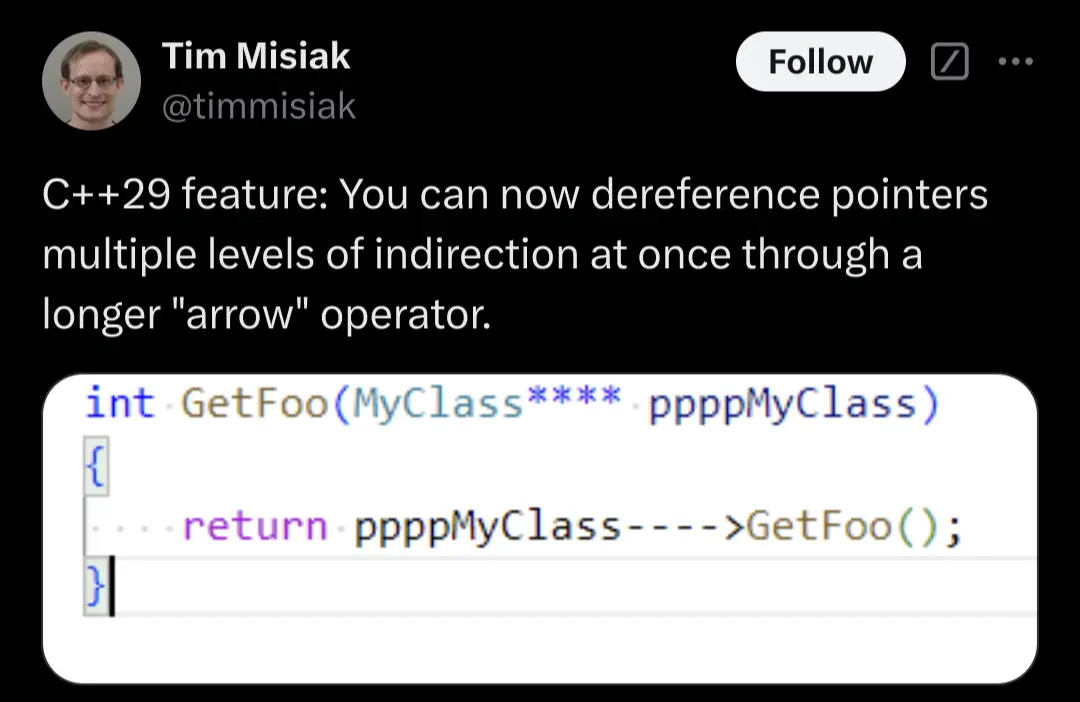this post was submitted on 29 Dec 2024
342 points (98.9% liked)
Programmer Humor
24241 readers
2256 users here now
Welcome to Programmer Humor!
This is a place where you can post jokes, memes, humor, etc. related to programming!
For sharing awful code theres also Programming Horror.
Rules
- Keep content in english
- No advertisements
- Posts must be related to programming or programmer topics
founded 2 years ago
MODERATORS
you are viewing a single comment's thread
view the rest of the comments
view the rest of the comments

Mostly because at the lowest level of computing (machine code and CPU instructions), pointers are the only method (that I know of) of any kind of indirection.
At the lowest level, there are 2 types of references:
Every higher level language feature for memory management (references, objects, safe pointers, garbage collection, etc) is just an abstraction over raw pointers
Pointers themselves are really just abstractions over raw integers, whose sole purpose is to index into RAM
With that in mind, pointers to pointers are a natural consequence of any kind of nested object hierarchy (linked lists, trees, objects with references to other objects, etc)
The only other kind of indirection would be self-modifying machine code (like a Wheeler Jump). But the computing world at large has nixed that idea for a multitude of reasons
That’s not a pointer to another pointer, but a pointer to a data structure that happens to contain another pointer.
The distinction is meaningless in the land of Opcode's and memory addresses
For example, a struct is just an imaginary "overlay" on top of a contiguous section of memory
Say you have a struct
You could easily get a reference to
foo->child->bby doing pointer arithmetic(I've not used C much so I've probably got the syntax wrong)
Magic.
Blasphemy.
Yes, you can do crazy shit if you try hard enough, but every reasonable programmer would access
foo->child->balsfoo->child->band not via that crazy LISPy expression.By question was: Why would you have a pointer to a memory address that itself only holds a pointer somewhere else?
So far the only reasonable explanation is from @[email protected]:
I'm more talking about theory than practical.
I've not developed anything in C/C++, so I don't know practical uses for a double pointer, aside from multidimensional arrays, or arrays of pointers
My point was that, conceptually, pointers to pointers is how most complex data structures work. Even if the C representation of said code doesn't have a
int**somewhere